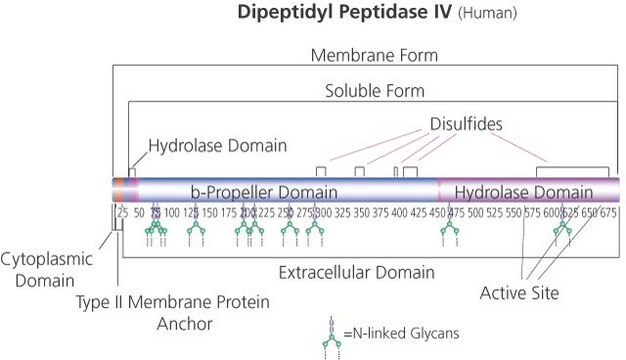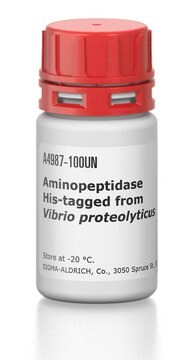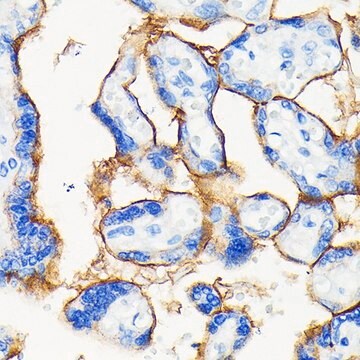D3321
Dipeptidyl Peptidase VII human
recombinant, expressed in Sf9 cells
Sinonimo/i:
DPP7, Quiescent cell proline dipeptidase
About This Item
Prodotti consigliati
Ricombinante
expressed in Sf9 cells
Livello qualitativo
Stato
solution
Attività specifica
≥1,500 units/μg protein
≥1500 units/μg protein
PM
89.1 kDa
Malattie correlate
diabetes; cardiovascular diseases
Condizioni di spedizione
dry ice
Temperatura di conservazione
−70°C
Applicazioni
Azioni biochim/fisiol
Proprietà fisiche
Definizione di unità
Stato fisico
Avvertenze
Danger
Indicazioni di pericolo
Classi di pericolo
Eye Dam. 1 - Repr. 1B - Skin Corr. 1C
Codice della classe di stoccaggio
6.1C - Combustible acute toxic Cat.3 / toxic compounds or compounds which causing chronic effects
Classe di pericolosità dell'acqua (WGK)
WGK 2
Elenchi normativi
Forniamo informazioni su eventuali restrizioni prevalentemente per i prodotti chimici. Per altre tipologie di prodotto siamo in grado di fornire soltanto informazioni limitate. Nessuna segnalazione significa che nessuno dei componenti è citato in un elenco. È dovere dell’utilizzatore assicurarsi che il prodotto venga impiegato in maniera sicura e a norme di legge.
EU REACH Annex XVII (Restriction List)
Scegli una delle versioni più recenti:
Certificati d'analisi (COA)
Non trovi la versione di tuo interesse?
Se hai bisogno di una versione specifica, puoi cercare il certificato tramite il numero di lotto.
Possiedi già questo prodotto?
I documenti relativi ai prodotti acquistati recentemente sono disponibili nell’Archivio dei documenti.
Il team dei nostri ricercatori vanta grande esperienza in tutte le aree della ricerca quali Life Science, scienza dei materiali, sintesi chimica, cromatografia, discipline analitiche, ecc..
Contatta l'Assistenza Tecnica.










